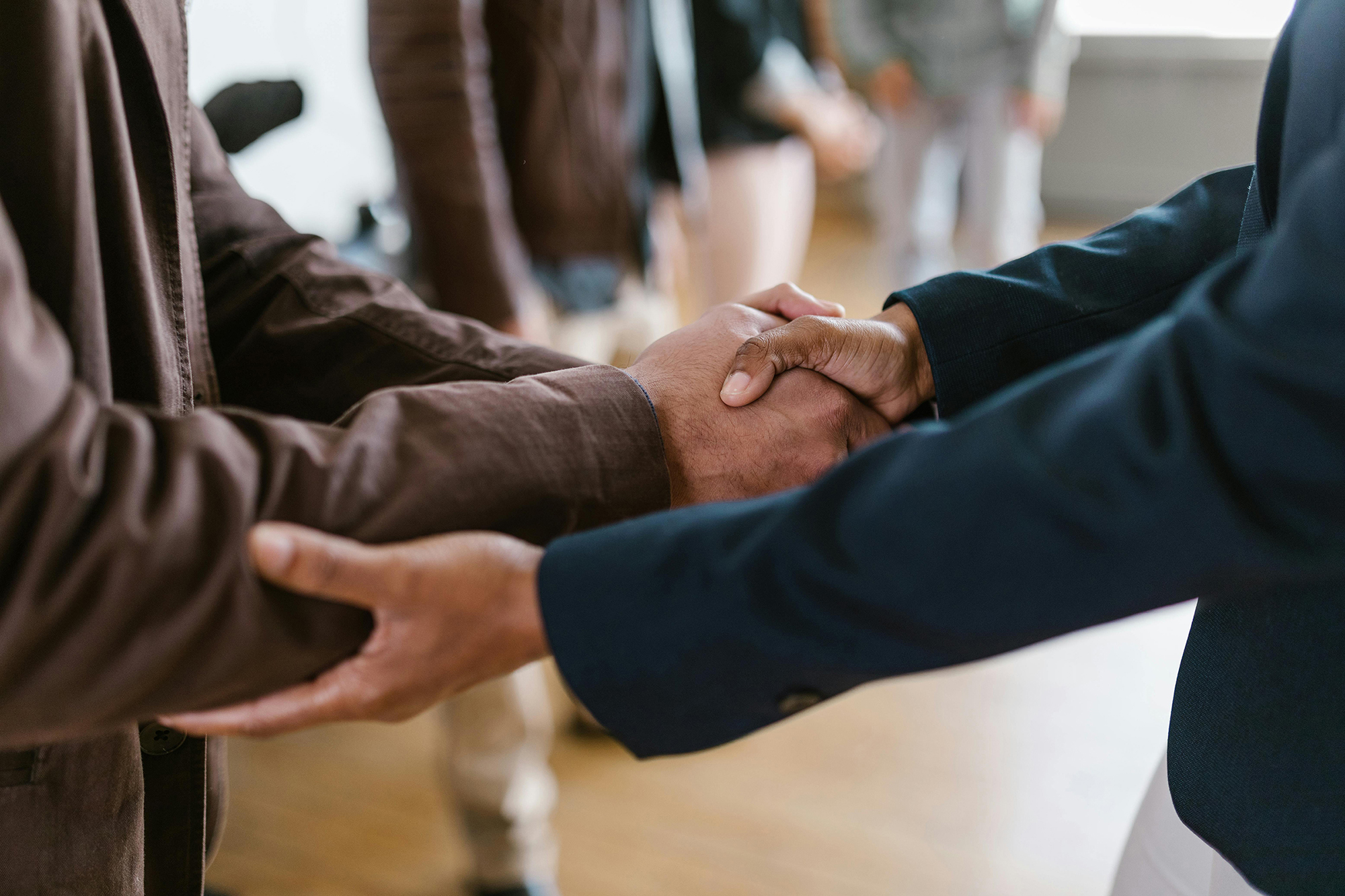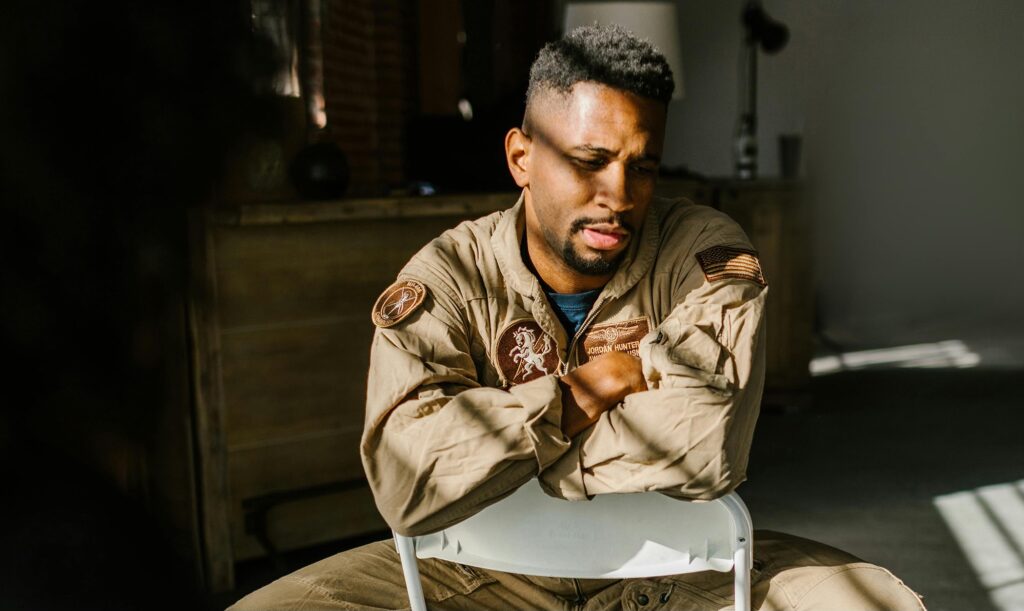Healing the Hidden Wounds

When Eric Pearson says that he’s a good therapist for United States military veterans, it’s not false pride speaking. He’s a good therapist for veterans because “I’m a veteran myself.”
Before becoming a Licensed Clinical Social Worker with a Bachelor of Science in Psychology from the University of Wyoming and a Master of Social Work from Florida State University, Pearson served for four years in the Army, achieving the rank of specialist. His duty stations were Fort Hood in Texas and Fort Campbell in Kentucky. His deployment was to Liberia in Africa—“at the peak of the Ebola outbreak [in 2014],” he is quick to add when remembering the miseries he saw there.
Upon leaving the military, Pearson began to interact with veterans who were struggling with different mental illnesses. But he didn’t know how to address them. Moreover, he didn’t even know how to connect those veterans with resources. Reliable resources. It was then that he decided to go to school.
One other factor propelled the native Floridian forward. “I was friends with a retired first sergeant, and he ended up committing suicide,” Pearson recalls. “No one really saw the signs and no one really understood some of the symptoms. No one was able to provide any empathetic support because we didn’t know this person was drowning. So that kind of launched me into how I can give back to the veteran community. I wanted to do something.”
“Veterans are more likely to interact with other veterans because they feel a sense of understanding or connectiveness.”
A psychology assignment in college—to bring awareness to a mental illness—also set him on his career path. Using the situation with his friend, the first sergeant, “I thought I would dive into the stigma related to post-traumatic stress disorder.” Pearson gathered a few friends together and made a video in which he navigated them through different scenes where different facts were presented. And then they would rip up a piece of paper that said, ‘I’m not afraid.’ The intended meaning of that video, Pearson says, was “we’re not afraid of PTSD, we’re not afraid to get help, we’re not afraid to reach out, we’re not afraid to say that I’m not OK.”
When Pearson posted the video on his social media, the response exceeded expectations.
“It spread like a virus,” he says. “I mean it was all over the country. I had veterans from different states reach out to me and say, ‘You know, no one understands what I’m going through. No one understands how hard it is just to ask for help. How scary it is, how challenging it is to take a step in that direction. Can you help me?’”
And that’s when Pearson knew that he was going to help veterans “improve their quality of life.” And one way to do so, he realized, is to fight against the narrative that many vets have. And that narrative is, “I’m the only one going through this; no one understands.” Pearson fights against that narrative—and so does Heroes United, he adds. By offering collaboration between veterans, Heroes United is another part of the solution, another way to improve quality of life.
Veterans, Pearson believes, are “more likely to interact with other veterans because they feel a sense of understanding or connectiveness.” Oftentimes a veteran enters therapy with a pre-existing notion that the therapist doesn’t understand either what they’ve gone through or the severity of their symptoms. Oftentimes a veteran believes that what they’ve been through is being devalued and misunderstood. But having a therapist who is a veteran changes those preconceptions. Having a therapist who is a veteran and who comprehends trauma is like gold.

“Trauma is the psychological reaction to an event,” Pearson says. “An event can be perceived as traumatic depending on a person’s resulting symptoms.” He clarifies his point with an example. “Two people get into a car accident, but one person is completely fine. The accident hasn’t affected their work, love or play at all. The situation wasn’t traumatic for them. But for the other person it creates an outcome where now they can’t work, they can’t drive, they can’t function in their social life. They’re starting to withdraw. They’re starting to struggle with sleep. They’re having flashbacks. They’re hyper-vigilant. Then we say, ‘OK, that’s a traumatic moment because that event caused a negative psychological reaction.’”
Even so, getting a veteran through the door to see a therapist and confront their trauma can be difficult. And the need to do so is increasing. In his own area of Wyoming, Pearson observes that there are more veterans who need therapy but struggle to find therapy that they feel comfortable with. It’s not so much a matter of good vs. bad service as it is there aren’t enough options for veterans. In this respect, Alliance Christian Counseling, Pearson’s company, has a novel and effective approach.
“My company offers a meet-and-greet where you come in and talk with us. It’s free of charge and everyone is welcome. And if you feel comfortable, we can move forward,” he explains. “But if you don’t, there’s no obligation. What that does is it puts the power into the veteran’s hands.” And empowering veterans is central to their therapy, in Pearson’s view.
“I have worked with veterans that have been in wars or been in service before I was even born,” he says. How then does he bridge the generation gap with someone who served in Vietnam, say, or Desert Storm? “I make sure to allow the veteran to feel that they know what they need—because they do, that’s why they’re there. I also make sure that I allow the veteran to not feel that I’m a know-it-all … When you’re working with older clients, especially veterans, they’re full of knowledge, they’re full of experience. They’ve tried almost everything that you’re gonna [bring] to the table—except for actually addressing the trauma. So that’s when I start the exploration process. ‘What has worked? What have you tried?’ And then I help them understand how something that may have happened [many] years ago has a negative effect on their body that is way outside of their control. So I take more of an educational approach. I don’t step into a room believing that I have all the answers. I step into a room and open a space where questions and answers can be explored and understood.”
“When you’re working with older clients, especially veterans, they’re full of knowledge, they’re full of experience.”
CBT (Cognitive Behavioral Therapy) and DBT (Dialectical Behavioral Therapy) are in Pearson’s toolbox, as is EMDR (Eye Movement Desensitization and Reprocessing). There are a lot of benefits to using EMDR with veterans, he says. “The way that works is we do bilateral movement that includes eye movement, tapping, the use of buzzers or tools that you hold in your hands that vibrate. What they do is they activate the right and left hemispheres of the brain and reactivate the autonomic nervous system. It desensitizes the physical and emotional reaction to the trauma. Through the activation process we’re reprocessing the memory, but we’re also teaching the body that it’s safe through the desensitization process.”
Pearson once had a supervisor who put the desensitization process in perspective by drawing an analogy to Mount Everest.
“Every emotion has a peak he told me,” Pearson recollects. “And because that peak feels so scary, it’s like looking at Mount Everest. At the bottom you can’t see the top of the mountain. And the closer to the top you get, the harder [the climb] gets. And as we know with Mount Everest, many people don’t make it to the top. It’s the same thing with our emotions. Like we don’t ever make it to that peak to see that we can make it over that peak. With EMDR we walk up to that edge and then we walk the client down and we teach the client how to relax their body. We show them this isn’t as scary as their anxiety has convinced them it is. I’m not saying it’s not scary. It is. But not as scary as they thought it was. … When a client is triggered, their emotions are like through the roof. And no one wants to feel like that. Our brain is just trying to search for a solution because it’s live or die—especially with a veteran. So being able to walk them through that and desensitize that process creates a new way of coping with the trauma. It doesn’t get rid of it. But now when they talk about it, they’re not having an emotional response to it.”
Therapy sessions usually last between 45 minutes and an hour, and Pearson can see between six and 10 clients a day. “I’ve worked with clients who experienced trauma decades ago and using EMDR it only took I would say six to eight sessions,” he says before adding a caveat. Other doors leading to other traumas may have been opened during those sessions. And sometimes that’s what veterans are afraid of when it comes to seeking treatment. The next scary, especially when they have spent their whole life closing those doors—or they joined the military as a result of those doors being open.”
Pearson is seeing more and more complex post-traumatic stress disorder (CPTSD) in veterans. Fortunately, further research, modalities, and interventions have been introduced to treat the mix-up of trauma that veterans have experienced before, during, and after military service. So, it’s not just a matter of treating the big trauma, or as Pearson puts it, “the big billboard sign—COMBAT VETERAN.” There’s nothing wrong with addressing that, he says. But that’s only one aspect of the solution.
It doesn’t take long when talking to Pearson to realize that he is a professional who is not only good at his job, he enjoys it. So, as the interview draws to a close, the next question is a no-brainer. What is most satisfying about working with veterans? After a pause, the answer comes quickly. “When they want to share their story. When they get to a point in therapy where their story is no longer a crutch. When they walk into my office towards the end of therapy and they don’t look at themselves as broken. When they don’t allow their shame to take over but start to feel compassion for themselves. That’s what keeps me doing what I do.”
His advice to veterans thinking of therapy is equally forthright: “Give it a try. You really have nothing to lose.”




